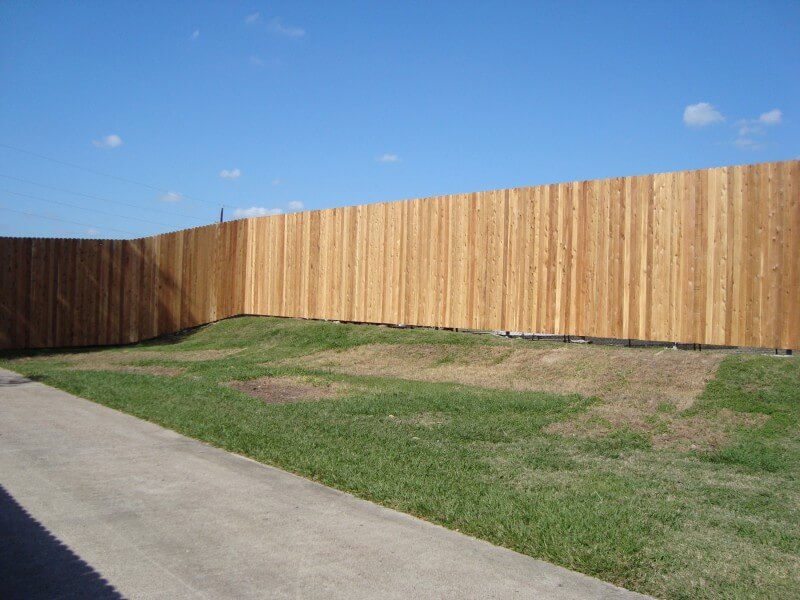Best Reasons to Choose Cedar for Your 2025 Fence Installation
You face a challenge in deciding what material to use for your upcoming barrier. Our research shows that cedar wood should be your first preference for your next fencing project. Homeownership has shown us the value of proper fence material selection during installation. Cedar stands out as a wood material which combines remarkable strength and attractive appearance and ecological sustainability. The natural pest resistance combined with extended lifespan creates multiple advantages from using cedar fencing. The remarkable wood has many benefits beyond its pest resistance but these aspects represent just the beginning of its advantages.

Key Points
- Cedar wood fences exhibit exceptional durability alongside natural resistance to rot decay and insect damage which leads to extended fence lifespan.
- Cedar fences create a warm rustic appearance that improves property aesthetics while providing design flexibility.
- Cedar wood contains natural oils that defend against pests so owners need less maintenance and chemical products.
- Cedar fencing proves to be a cost-effective choice despite initial expenses because it lasts long while needing minimal upkeep.
- The selection of cedar aligns with environmental sustainability because it generates minimal carbon emissions and comes from sustainably managed forests.
Unmatched Durability and Strength
Among fence installation materials cedar emerges as a superior choice because of its outstanding durability and strength characteristics. The enduring quality of our property boundaries heavily depends on these essential characteristics that our fence must possess.
Cedar wood provides an excellent choice for durable fences because it naturally resists decay and insect infestation and rot. The natural oils in cedar function as an automatic defense system that keeps insects away while protecting the fence structure from damage. The natural defense mechanism in cedar wood ensures our fence will endure both strength and stability during a prolonged period.
Cedar will survive all kinds of harsh weather conditions because it remains stable throughout every season. The fence’s resilience leads to reduced maintenance needs which decreases our future maintenance work. Our decision to use cedar for fence installation brings together strong construction and practicality while providing long-term durability.
Additionally, cedar offers excellent sound absorption, providing acoustic insulation that enhances the tranquility of our outdoor space.
The extensive lifespan of cedar fences demonstrates their solid construction quality. Our cedar fence will serve as a permanent reminder of choosing a durable material which provides excellent strength for our outdoor living area.
Aesthetic Appeal and Customization
The exceptional durability of cedar fencing combines with its unmatched appearance potential and various customization options. Cedar wood appeals to us as a natural fencing material because it develops a beautiful rustic appearance that ages beautifully. Our ability to style cedar material enables us to build different designs that match both home and surrounding landscape perfectly.
Let’s explore the aesthetic possibilities of cedar fencing:
| Style | Description | Aesthetic Appeal | Customization |
|---|---|---|---|
| Picket | Classic, charming | Traditional elegance | Height, spacing |
| Privacy | Tall, solid | Seclusion, clean lines | Top design, texture |
| Board-on-Board | Overlapping boards | Modern, sleek | Gap width, pattern |
| Lattice | Crisscross pattern | Airy, decorative | Spacing, integration |
Our cedar fences become more beautiful when we apply different finish treatments which include light bleaching and dark staining to protect the natural appearance of the wood while ensuring our personal style preferences. The absence of resins in cedar wood fences enables customization options which allow perfect outdoor space design. The adaptable nature of cedar fencing allows us to achieve either a weathered or polished finish which creates an inviting atmosphere in our yards.
Natural Resistance to Pests
The natural pest resistance of cedar wood serves as a primary advantage during fence installation. The importance of this feature must be considered during our evaluation of fencing options. The natural oils found in cedar wood function as strong insect repellents which defend our investment against termite damage and pest infestations. The aromatic oils function as natural pest repellents which decrease our need for chemical treatments while protecting the surrounding natural environment of our homes.
The resistance to rot and insects in cedar wood ensures it stays durable over time thus requiring minimal maintenance.
Cost-Effective Long-Term Investment
Savvy homeowners recognize that cedar fencing is a cost-effective long-term investment. While the initial cost may be higher than some alternatives, homeowners have observed that cedar fences offer significant savings over time. This is due to their durability, low maintenance requirements, and natural resistance to insects and decay.
Let’s break down the cost-effectiveness of cedar fencing:
| Feature | Benefit | Long-term Impact |
|---|---|---|
| Durability | Longevity | Fewer replacements |
| Low Maintenance | Reduced upkeep | Lower ongoing costs |
| Insect Resistance | No pest treatments | Savings on chemicals |
Homeowners confirm that cedar fences remove the requirement for regular fence maintenance and replacement thus proving as a solid financial investment for people building their home. The affordable fencing option delivers superior value due to its extended lifespan and minimal maintenance requirements compared to other materials.
Our community of homeowners understands how crucial it is to select smart property investments. The installation of cedar fences both improves home visual appeal and delivers durable long-lasting results that will maintain value throughout multiple years.
Environmental Sustainability
The three main factors prove cedar fencing as a sustainable option for the environment.
The Pacific Northwest and British Columbia forests supply cedar wood responsibly which maintains an endless supply of environmentally friendly material. Forest sustainability practices receive our backing through our choice of cedar since millions of new saplings get planted after the harvesting period. The organic properties of cedar along with its non-toxic nature create a healthier environment than chemically treated alternatives do.
The low carbon emissions from cedar fencing projects make our fencing initiatives more environmentally friendly. The lightweight structure of cedar wood results in lower transportation costs which establish it as a more environmentally friendly alternative to other materials. Our decision to use this renewable resource enables us to contribute to an environmentally friendly future which matches our ecological values.
Lastly, cedar fencing promotes a healthier ecosystem. Our selection of this renewable resource enables us to take part in the protection of our natural environment. Our fence installation represents a future-oriented investment which serves as more than just fence construction. People who want both environmental sustainability and durability in their fencing should select cedar because of its sustainable properties. Our thoughtful decision to choose cedar fencing enables us to create a beneficial impact on our planet.
Low Maintenance Requirements
The need for minimal upkeep in cedar fencing makes it an excellent solution for homeowners who want simple fence maintenance. The natural oils present in cedar wood act as pest repellents that protect it from decay and rot while defending against insects. The natural durability of cedar wood makes it an attractive choice for fencing because it needs less maintenance compared to other wood materials.
Our research indicates that cedar fence maintenance includes periodic cleaning combined with occasional re-sealing every few years to preserve its structure. Our minimal maintenance routine saves us time and work so we can enjoy our outdoor areas without worrying about fence upkeep.
The fence will survive without staining or painting yet these procedures provide an opportunity to enhance its appearance.
The community of homeowners should base their fencing decision on cedar because it provides a sound foundation for informed choices. The fence requires minimal repairs and replacements which results in long-term cost savings.
Our cedar fences will remain beautiful and functional for many years through proper maintenance practices that require little work from us.
Frequently Asked Questions
Why Use Cedar for Fences?
Our organization selects cedar wood for fence construction because it possesses built-in natural resistance to rotting and pest damage which extends its useful life. The material is budget-friendly and adaptable for design purposes and shows strong resistance to harsh weather conditions. Cedar aligns with our sustainable living principles because it functions as an eco-friendly material.
What Are the Disadvantages of a Cedar Fence?
We’ve got some drawbacks to weigh. The initial cost of cedar fences is high while they need regular upkeep but they do not block complete views. The material displays weak resistance against strong winds and it burns more easily than other fencing materials do. We need to assess these elements with careful attention.
What Type of Cedar Is Best for Fencing?
We recommend Western Red Cedar as the top choice for fencing. The natural rot and decay resistance of Western Red Cedar ensures it remains durable throughout its lifespan. Our secondary recommendation for fencing material is Redwood Cedar because it demonstrates exceptional weather resistance and pest-resistant qualities.
What Are the Disadvantages of This Wood?
We’re diving into cedar’s Achilles’ heel here. We’ve discovered that cedar wood exhibits softness which creates vulnerabilities to dents and scratches. The material shows natural aging to gray color and needs constant upkeep and lacks fire protection features and develops mold growth in humid environments if not properly treated.
Takeaway
We’ve examined solid arguments which support the selection of cedar for fence construction projects. The natural pest and decay resistance of cedar has been extensively documented but recent research shows its effectiveness depends on the local climate conditions. The combination of cedar’s durability along with its attractive appearance and environmentally friendly nature makes it an excellent selection for homeowners in most cases. The best way to decide if cedar suits your site needs is by consulting with an expert fencing professional in your area.








